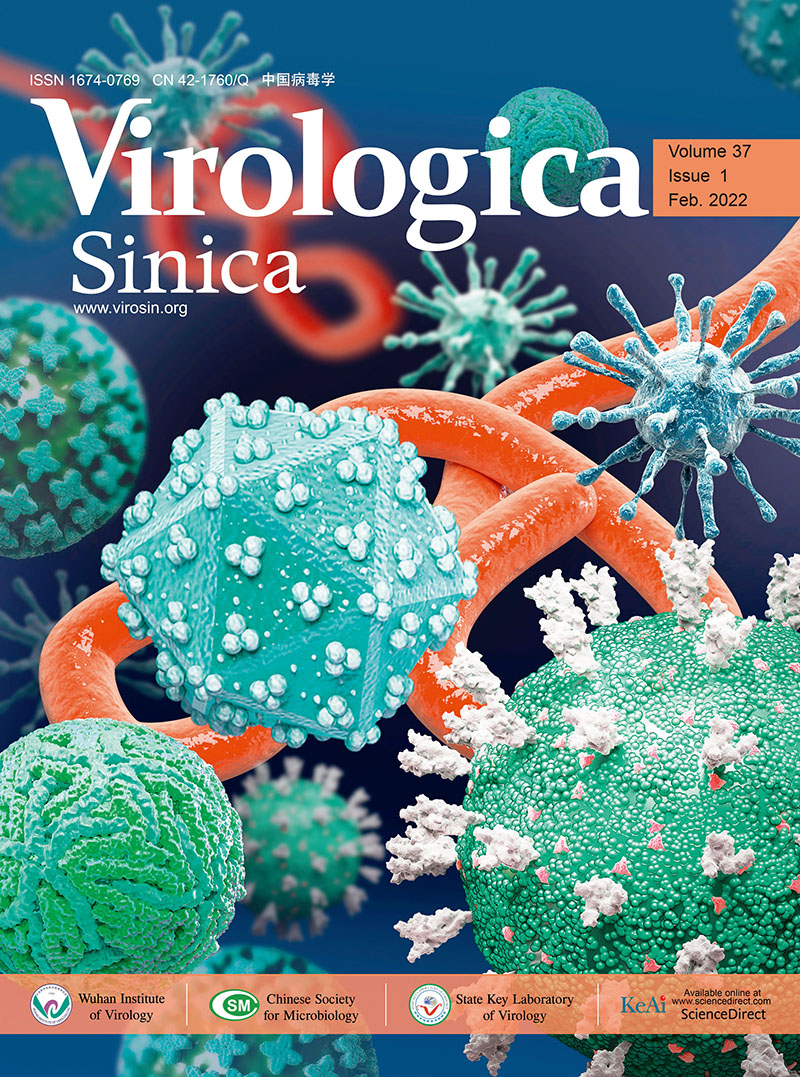-
Aghaie A, Aaskov J, Chinikar S, Niedrig M, Banazadeh S, Mohammadpour HK (2014) Frequency of dengue virus infection in blood donors in sistan and baluchestan province in Iran. Transfus Apher Sci 50: 59-62.
-
Aghaie A, Aaskov J, Chinikar S, Niedrig M, Banazadeh S, Mohammadpour HK (2016) Frequency of west nile virus infection in Iranian blood donors. Indian J Hematol Blood Transfus 32: 343-346.
-
Ali I, Dasti JI (2018) Chikungunya virus: An emerging arbovirus in Pakistan. J Pak Med Assoc 68: 252-257.
-
Andayi F, Charrel RN, Kieffer A, Richet H, Pastorino B, Leparc-Goffart I, Ahmed AA, Carrat F, Flahault A, De Lamballerie X (2014) A sero-epidemiological study of arboviral fevers in Djibouti, Horn of Africa. 8: e3299.
-
Ang LW, Kam YW, Lin C, Krishnan PU, Tay J, Ng LC, James L, Lee VJ, Goh KT, Ng LF (2017) Seroprevalence of antibodies against chikungunya virus in Singapore resident adult population. PLoS Negl Trop Dis 11: e0006163.
-
Bagheri M, Terenius O, Oshaghi MA, Motazakker M, Asgari S, Dabiri F, Vatandoost H, Mohammadi Bavani M, Chavshin AR (2015) West Nile virus in mosquitoes of Iranian wetlands. Vector Borne Zoonotic Dis 15: 750-754.
-
Becker N PD, Zgomba M, Boase C, Zgomba M, Boase C, Madon MB, Dahl C, Kaiser A (2010) Mosquitoes and their control (2nd Ed), Springer, Berlin. pp. 577.
-
Chancey C, Grinev A, Volkova E, Rios M (2015) The global ecology and epidemiology of West Nile virus. Biomed Res Int 2015: 376230.
-
Chinikar S, Javadi A, Ataei B, Shakeri H, Moradi M, Mostafavi E, Ghiasi SM (2012) Detection of West Nile virus genome and specific antibodies in iranian encephalitis patients. Epidemiol Infect 140: 1525-1529.
-
Chinikar S, Ghiasi SM, Shah-Hosseini N, Mostafavi E, Moradi M, Khakifirouz S, Rasi Varai FS, Rafigh M, Jalali T, Goya MM, Shirzadi MR, Zainali M, Fooks AR (2013) Preliminary study of dengue virus infection in Iran. Travel Med Infect Dis 11: 166-169.
-
Doosti S, Yaghoobi-Ershadi MR, Schaffner F, Moosa-Kazemi SH, Akbarzadeh K, Gooya MM, Vatandoost H, Shirzadi MR, Mosta-Favi E (2016) Mosquito surveillance and the first record of the invasive mosquito species Aedes (Stegomyia) albopictus (skuse)(diptera: Culicidae) in southern Iran. Iran J Public Health 45: 1064-1073.
-
Eybpoosh S, Fazlalipour M, Baniasadi V, Pouriayevali MH, Sadeghi F, Ahmadi Vasmehjani A, Karbalaie Niya MH, Hewson R, Salehi-Vaziri M (2019) Epidemiology of West Nile virus in the Eastern Mediterranean region: A systematic review. PLoS Negl Trop Dis 13: e0007081.
-
Gan V, Leo YS (2014) Current epidemiology and clinical practice in arboviral infections-implications on blood supply in South-East Asia. ISBT Sci Ser 9: 262-267.
-
Gomez-Dantes H, Willoquet JR (2009) Dengue in the Americas: Challenges for prevention and control. Cad. Saude Publica 25 Suppl 1:S19-S31.
-
Heydari M, Metanat M, Rouzbeh-Far MA, Tabatabaei SM, Rakhshani M, Sepehri-Rad N, Keshtkar-Jahromi M (2018) Dengue Fever as an Emerging Infection in Southeast Iran. Am J Trop Med Hyg 98:1469-1471.
-
Higuera A, Ramirez JD (2018) Molecular epidemiology of dengue, yellow fever, Zika and chikungunya arboviruses: An update. Acta Trop 190:99-111.
-
Humphrey JM, Cleton NB, Reusken CB, Glesby MJ, Koopmans MP, Abu-Raddad LJ (2016) Dengue in the Middle East and North Africa: A systematic review. PLoS Negl Trop Dis 10: e0005194.
-
Humphrey JM, Al-Absi ES, Hamdan MM, Okasha SS, Al-Trmanini DM, El-Dous HG, Dargham SR, Schieffelin J, Abu-Raddad LJ, Nasrallah GK (2019) Dengue and chikungunya seroprevalence among Qatari nationals and immigrants residing in Qatar. PloS One 14: e0211574.
-
Hussain R, Alomar I, Memish Z (2013) Chikungunya virus: Emergence of an arthritic arbovirus in Jeddah, Saudi Arabia. East Mediterr Health J 19 : 506-508.
-
Kalantari M, Salehi-Vaziri M, Pouriayevali MH, Baniasadi V, Salmanzadeh S, Kharat M, Fazlalipour M (2019) Seroprevalence of West Nile virus in Khuzestan province, southwestern Iran, 2016-2017. J Vector Borne Dis 56: 263-267.
-
Mease LE, Coldren RL, Musila LA, Prosser T, Ogolla F, Ofula VO, Schoepp RJ, Rossi CA, Adungo N (2011) Seroprevalence and distribution of arboviral infections among rural Kenyan adults: A cross-sectional study. Virol J 8: 371.
-
Pouriayevali MH, Rezaei F, Jalali T, Baniasadi V, Fazlalipour M, Mostafavi E, Khakifirouz S, Mohammadi T, Fereydooni Z, Tavakoli M, Azad-Manjiri S, Hosseini M, Ghalejoogh M, Gouya MM, Failloux AB, Salehi-Vaziri M (2019) Imported cases of Chikungunya virus in Iran. BMC Infect Dis 19: 1004.
-
Presti AL, Lai A, Cella E, Zehender G, Ciccozzi M (2014) Chikungunya virus, epidemiology, clinics and phylogenesis: A review. Asian Pac J Trop Med 7: 925-932.
-
Saidi S (1974) Viral antibodies in preschool children from the Caspian area, Iran. Iran J Public Health 3: 83-91.
-
Saidi S, Tesh R, Javadian E, Nadim A (1976) The prevalence of human infection with West Nile virus in Iran. Iran J Public Health 5: 8-13.
-
Schaffner F, Angel G, Geoffroy B, Hervy JP, Rhaiem A, Brunhes J (2001) The mosquitoes of Europe/Les moustiques d’Europe. IRD Editions & EID Mediterranee.
-
Shahhosseini N, Chinikar S, Moosa-Kazemi SH, Sedaghat MM, Kayedi MH, Luhken R, Schmidt-Chanasit J (2017) West Nile virus lineage-2 in Culex specimens from Iran. Trop Med Int Health 22:1343-1349.
-
Shaibi T, Saadawi WK, Aghila H, Annajar BB (2017) Prevalence of IgG antibodies for the West Nile virus in human population in Tripoli, Libya. Vector Borne Dis 54:183-186.
-
Sharifi Z, Shooshtari MM, Talebian A (2010) A study of West Nile virus infection in Iranian blood donors. Arch Iran Med 13:1-4.
-
Tavakoli F, Rezaei F, Shafiei-Jandaghi NZ, Shadab A, Mokhtari-Azad T (2020) Seroepidemiology of dengue and chikungunya fever in patients with rash and fever in Iran, 2017. Epidemiol Infect. 2020 148:e42.
-
Vongpunsawad S, Intharasongkroh D, Thongmee T, Poovorawan Y (2017) Seroprevalence of antibodies to dengue and chikungunya viruses in Thailand. PloS One, 12: e0180560.
-
Yaghoobi-Ershadi M, Doosti S, Schaffner F, Moosa-Kazemi SH, Akbarzadeh K, Yaghoobi-Ershadi N (2017) Morphological studies on adult mosquitoes (Diptera: Culicidae) and first report of the potential Zika virus vector Aedes (Stegomyia) unilineatus (Theobald, 1906) in Iran. Bull Soc Pathol Exot 110 :116-121
















 DownLoad:
DownLoad: